The Rise of
the Podcast
Introduction
During any given week pre-coronavirus, an estimated 62 million people in the U.S. were listening to podcasts.1 When COVID-19 hit, it accelerated the podcast trend. After just one month of social distancing in the U.S., American podcast consumption rose a remarkable 18%.2 While podcasts saw an initial slump3 as commutes stopped, it increased as Americans turned to business, finance and comedy podcasts amid economic uncertainty and stress.4 Spotify, for example, reported in July that its podcast consumption had doubled.5 As of October 2020, there were more than 34 million total podcast episodes (on all channels) available for listeners.6 Forecasts suggest that the number of podcast listeners will surpass 160 million in 2023.7
The podcast has become an effective and profitable communications opportunity for organizations and thought leaders across the country. And yet, just 15 years ago, podcasting was an untapped form of entertainment, public relations and marketing. Between 2018 and 2019 alone, the number of people listening to at least one podcast a month grew from one in four to one in three, according to The New York Times. 8 Its meteoric rise shows how quickly new mediums of communication can become cultural mainstays.

The rise of the podcast over the course of the past decade and a half has profoundly changed the way in which consumers engage with media – and, by extension, the ways in which companies and leaders can reach target audiences more effectively. By examining the podcast’s astonishing growth and its current trends, we can better understand this medium’s profound applications for thought leadership across all industries.
Don’t have time to read the whole white paper now?
We’ll send you a free digital copy so you can read it at your own convenience.
The History of the Podcast
Podcasting began in 2003 as a collaboration between Dutch MTV video jockey Adam Curry and software developer Dave Winer.9 Winer helped Curry develop a technology that enabled listeners to download audio files automatically from the internet as they became available – essentially a way of subscribing to audio content, or “audioblogging,” as it was first called.
The term “podcasting” was coined by Ben Hammersley in a February 2004 article for The Guardian describing this new form of radio broadcasting. Ex-New York Times journalist Christopher Lydon, who teamed up with Winer to create the first podcast “Open Source,”10 explained that with the new medium, “anyone could be a broadcaster.”11
By 2005, Apple was releasing thousands of free podcasts on iTunes, and the platform took off. Steve Jobs called it “TiVo for radio.” 12 Eventually, podcasting became more user-friendly as pre-recorded audio files switched to streaming technology, enabling podcasters to broadcast to live audiences and then offer the episode for download later. 13
In 2014, Apple released iOS 8, which had its podcast app built-in. This brought the medium to the forefront of public visibility.14 Later that year, “Serial,” the podcast that would change it all, premiered. Produced by the same team as “This American Life,” the first season of the podcast followed a cold case from 1999, reexamining the murder of Maryland teenager Hae Min Lee and questioning the conviction of Adnan Syed, her former boyfriend.
“Serial” became the first podcast to reach 5 million downloads, and according to Edison Research, the number of monthly podcast listeners in America essentially doubled in the five years following its premiere, from approximately 39 million listeners to around 90 million.15 16
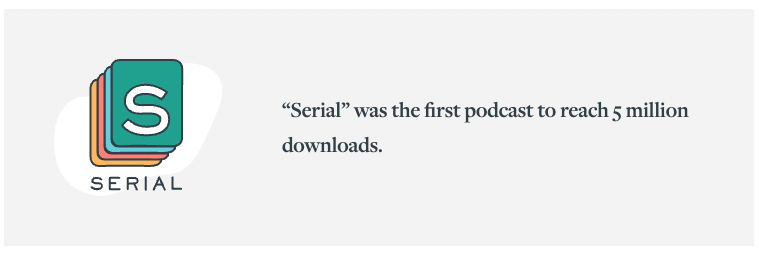
Part of the appeal today is the diversity of content as well as content providers; podcasts today are recorded by major companies and by independent creators alike. They have also opened up a new venue for advertising and public relations, since podcasts can often reach niche audiences that other media can’t. A 2019 study by the Interactive Advertising Bureau found that the podcast industry was responsible for $479 million in advertising revenue in 2018.17
The podcast market has captured the interest of big media companies, such as Google, Pandora and Spotify, who are competing for listeners with the original supporter of podcasts, Apple. In 2019, Spotify announced a planned expenditure of $500 million on podcast-related acquisitions, including content studios and a creation app, and the company has plans to build out its podcast ad business.18
Podcasts by the Numbers
According to Edison Research’s 2019 report The Podcast Consumer, 32% of Americans are listening to podcasts on a monthly basis, up from 26% in 2018, for an increase of about 90 million listeners. By the end of 2019, there were more than 700,000 podcasts and 29 million episodes, up 27% from the previous year.19
One reason we expect continued podcast growth is the relatively low cost of launching a podcast. Content creators can launch a podcast for essentially the cost of a microphone, recording software, a podcast hosting service and a thumbnail graphic – in some cases, less than $100.20 This is why so many podcasts can reach smaller niche audiences that have targeted public relations potential. Low cost allows for easy entrance as well as faster market saturation.
Consequently, large companies are buying up the most popular podcasts and beginning to implement advertising options across the network. These changes will institutionalize a certain level of quality, but may reduce revenue options for those who want to profit from their podcasts. While it won’t preclude smaller podcast startups, it will drive a clearer difference between a “professional” and a “mom & pop” podcast experience.
For example, Spotify bought exclusive rights to Joe Rogan’s library for $100 million in May.21 iHeartMedia, which owns the most radio stations in the U.S., bought Voxnest (which provides advertising and analytical tools for podcasters), in order to expand its empire into the podcast space.22 In July, SiriusXM bought Stitcher for $325 million.23 And Spotify paid nearly $200 for The Ringer, the podcast and media company founded by Bill Simmons.24
Corporate podcasters need to consider that it may be cheap to start a podcast today, but the market will naturally drive a “quality principle” that corporations that care about their image will need to consider.
Although podcast listenership skews heavily toward white users, who make up 66% of monthly consumers (followed by African Americans at 11% and Hispanic listeners at 9%), podcast listenership is spread relatively evenly across gender, age group and educational background.25
Advertising vs. Public Relations: What’s the Difference?
Podcasts can be a lucrative tool for both advertising and public relations. If used effectively, they can be used to help sell a product or brand (marketing), or to help sell an idea or thought leadership (public relations).
It’s not a cheap form of advertisement, however, if you want to pursue the highest-ranked shows. According to AdvertiseCast, the industry average rates for podcast advertising are: $15 per thousand listeners (CPM) for a 10-second ad, $18 CPM for a 30-second ad and $25 CPM for a 60-second ad. Popular podcasts can charge advertisers $10 to $50 for every 1,000 listeners, which can add up quickly.26
One of the reasons it’s expensive is that it’s effective. According to a survey conducted by Edison Research, 37% of monthly podcast listeners are somewhat more likely to consider the brand advertised on a podcast, and 17% responded that they would be much more likely to consider that brand.27 A 2020 Pinkston Institute survey found that over half of listeners (55%) have purchased a product after hearing it discussed or advertised on a podcast.
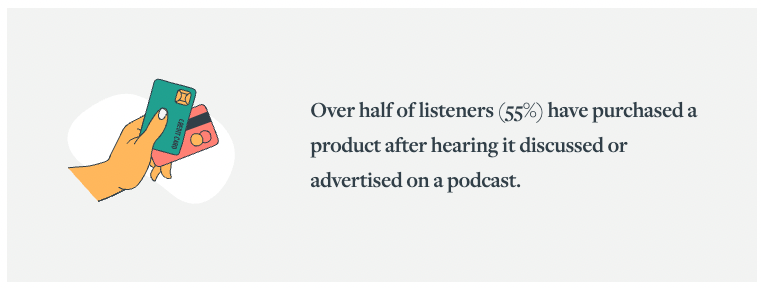
The appeal of podcasts for marketers and PR teams is that each show and episode has specific content geared toward a narrow audience – targeted marketing at its finest. Spotify has emerged as the most powerful network for selling ads, because it effectively leverages its data, including listener age, gender and location preference, to target consumers, providing the most curated ad experience.28
However, recent Pinkston Institute research shows that podcasts may be a more effective tool for PR efforts than product advertising, unless advertisements are integrated into the flow of the podcast. 70% of podcast listeners say they always or sometimes fast-forward through advertisements, suggesting that interviews and guest-hosting spots, along with live-read and content-integrated advertising, are a more reliable way than sponsored ads to reach an audience. The majority of listeners (64%), according to Pinkston Institute research, say they have visited an organization’s website after hearing about it on a podcast.
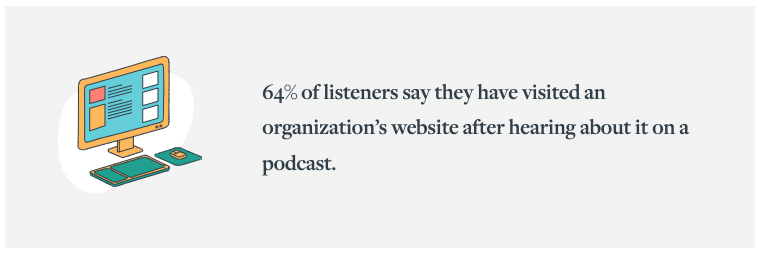
For public relations efforts, podcasting offers organizations, experts and thought leaders the opportunity to target users with an interest in a specific topic, and to build off owned content, like social media or blog posts, to connect to current audiences. An important benefit of podcasts is that unlike social media, they offer an extended timeframe in which to share information. Most podcast interviews range from 15 to 60 minutes, as compared to local television news segments, which typically last about three minutes.29 In some cases, depending on your goal and audience, television coverage can be the preferable medium; but in some instances, the reach of a podcast can be greater than that of a TV audience, generating thousands of more listeners per episode for popular podcasts than some TV series.30
An effective way to leverage podcasts for PR is guest placement. This method involves working with an existing podcast that has a previously established brand and audience that is relevant to an individual’s or company’s own brand, and setting up interviews around a pre-established topic. The goal with a guest spot isn’t to talk specifically about the company or business, but instead to provide compelling content the podcast listeners will want to hear.
A successful example of this type of PR podcast is How I Built This with Guy Raz; in each episode, Raz interviews the founders of major companies about their origin stories and exposes who they are as leaders and why. The show has more than 19.2 million monthly downloads and a consistent and loyal listener base.31
The second way to utilize podcasts for PR is to create a branded podcast. Tinder, for example, created DTR, a podcast about dating in the digital age. Branded podcasts are highly effective at reaching a wider audience and promoting a deeper understanding of a brand or company.
Marketers can use podcasts by buying either embedded or host-read ads or traditional pre-recorded ads. Like radio, host-read podcast ads are particularly effective when the host is a trusted and respected name; consumers tend to put their trust in brands that hosts endorse. Research by IAB indicates that over three quarters of podcast listeners find ads memorable and motivating, and 63% made a purchase after listening to a podcast ad.32
What Makes a Successful Podcast?
In February 2020, before the U.S. onset of COVID-19, Pinkston Institute conducted a survey of 1050 American adults, in which 587 (56%) said they listen to podcasts at least a few times a year. The results shed light on the top ten things brands and thought leaders should consider when launching, sponsoring, advertising, or guesting on a podcast:
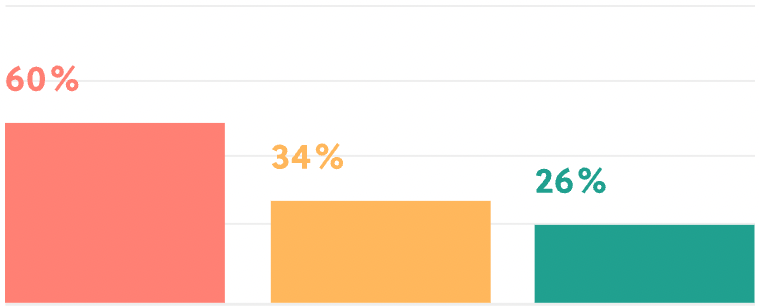
Regularity
Of podcast listeners, (60%) of respondents said they listen regularly – (34%) listen daily and (26%) listen weekly, suggesting that choosing a frequently-released podcast for PR efforts is most beneficial.
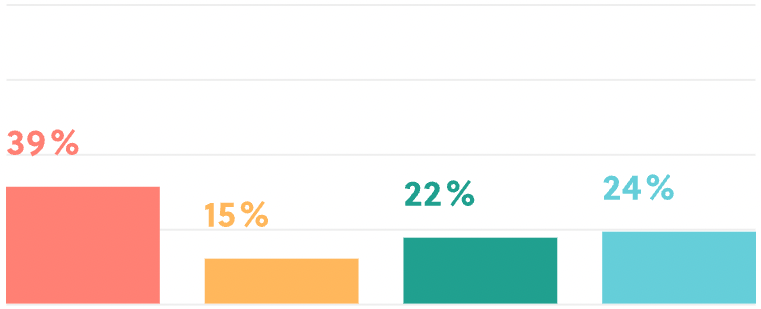
Length
More podcast listeners (39%) prefer the “sweet spot” of 16-30 minutes to any other length. Podcasts over 45 minutes will turn off most listeners – only (15%) of listeners said they prefer podcasts over this length. (22%) prefer podcasts from 1-15 minutes, and (24%) prefer podcasts 31-45 minutes
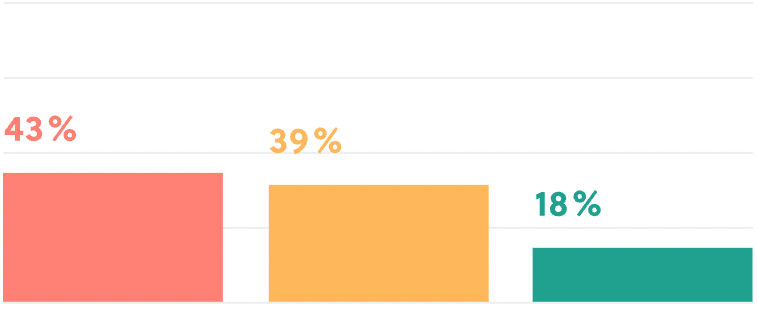
Purpose
The top two reasons listeners cited for choosing a podcast was 1) entertainment and 2) staying informed on the news. (43%) of listeners ranked entertainment as the number one reason they listen to podcasts, and (39%) ranked staying informed on the news as their top reason. Only (18%) of listeners ranked personal and professional development as their top reasons for listening. These results suggest that thought leaders wanting to discuss a topic related to personal or professional development should frame that topic in the context of entertainment or recent events.
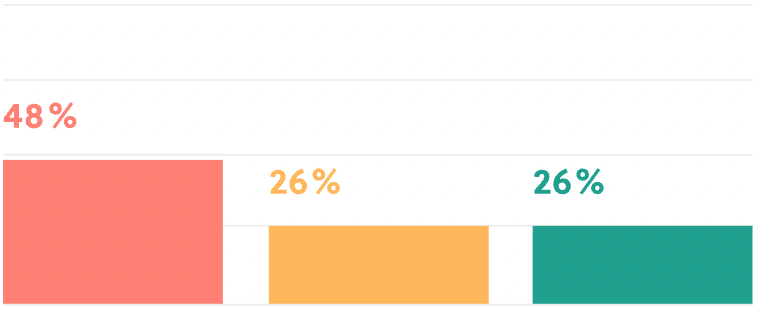
Format
More hosts is better. Nearly half (48%) of listeners prefer a podcast in which multiple hosts discuss a topic together. (26%) preferred an interview-style podcast, and (26%) preferred a single host.
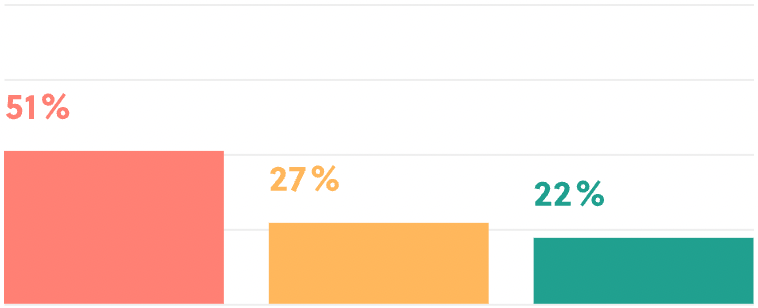
Regularity
Podcasts released weekly will appeal to the most number of listeners. More than half of listeners (51%) say they prefer weekly podcasts, while (27%) prefer daily podcasts. Only (22%) of listeners prefer podcasts released once or twice a month.
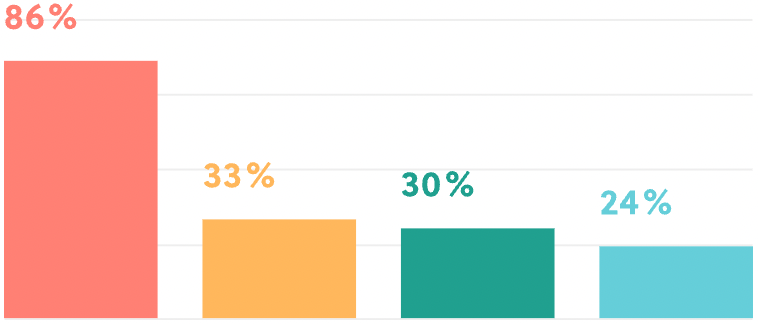
Platform
Apple, Google and Spotify are the most preferred platforms for podcast listening, claiming (86%) of market. (33%) of listeners use Google, (30%) use Apple and (24%) use Spotify. Stitcher and other platforms are less frequently used. Google and Apple platforms are most likely preferred because of their built-in apps on Android phones and iPhones.
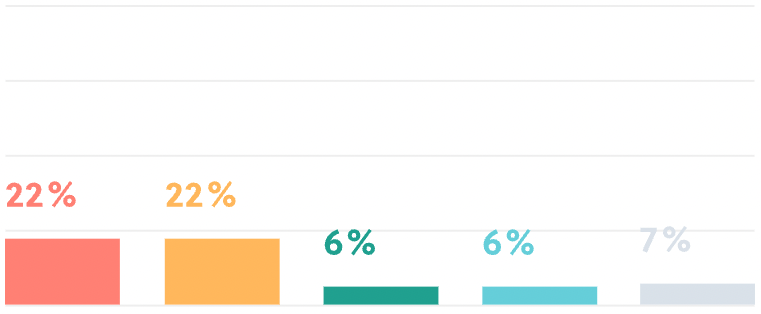
Host Personality
Humor and interview skills top the list of best host qualities. Almost a quarter (22%) of listeners ranked humor as one of the top three qualities for a host, and another (22%) said the ability to ask good questions was among the most important. Interesting, celebrity status was the least important, with only (6%) of respondents ranking this in their top three. Gender (6%) and age (7%) also didn’t matter to most. A calm tone of voice, an energetic tone of voice and being respected in their field ranked in the middle. Takeaway: If hosts aren’t funny, they should be very good at what they do.
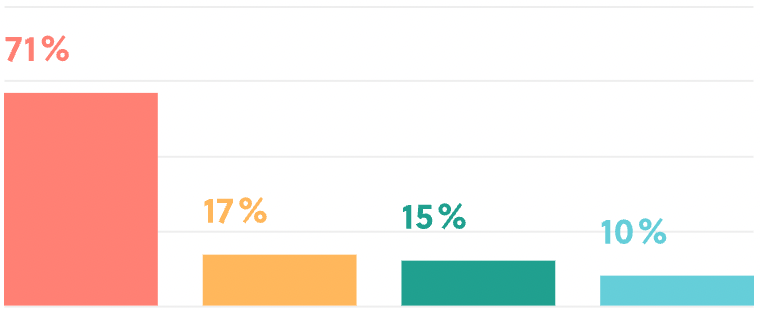
Producer
Most listeners (71%) said they prefer a podcast produced by a company or nonprofit whose name they recognize, as opposed to a celebrity producer (17%), a media organization (15%) or a sports or entertainment organization (10%). This data indicates that producing a podcast is an effective PR strategy for both companies and nonprofits.
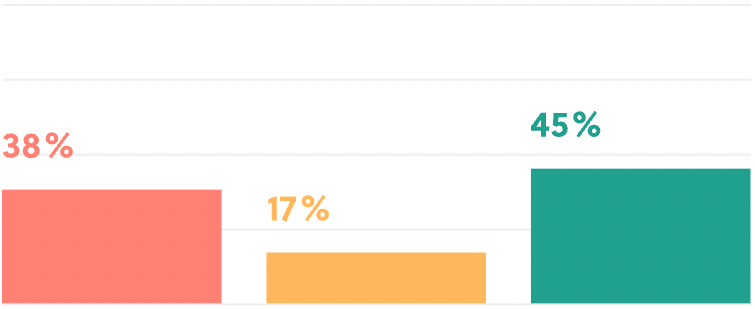
Topics
More listeners (38%) said they prefer a podcast that covers multiple topics or discussions in a single episode, versus just one (17%). However, (45%) said they listen to both, suggesting that topic variety is less important than other factors in choosing a podcast.

Ratings
Listener reviews matter. Only (15%) of listeners said ratings and reviews are not at all important when choosing a podcast. (59%) believe they are moderately to extremely important. While ratings aren’t the most important factor in choosing a podcast, it’s important to keep ratings – not just listener numbers – in mind when evaluating podcasts for advertising or PR. Podcasts can be reviewed on platforms like iTunes as well as apps like Podcast Republic and Podcast Addict.
What Are the Top Podcasts?
A March 2020 Pinkston analysis of the top podcasts as ranked by Apple 33, Spotify 34 and Stitcher 35 found that the following shows were consistently ranked in the top ten. The reader should keep in mind that not all podcasts are developed the same, some may be original content while others simply recasts from other sources.
Top five shows:
- The Joe Rogan Experience (comedy 4x a week)
- The New York Times’ The Daily (news 5x a week)
- Audio Chuck’s Crime Junkie (true crime 1x times a week)
- My Favorite Murder with Karen Kilgariff and Georgia Hardstark (comedy 1x times a week)
- NPR’s Up First (news 5x a week)
Other popular shows include:
- The Rachel Maddow Show (news 5x per week36)
- The Daily Wire’s The Ben Shapiro Show (news 5x per week)
- NPR’s This American Life (society&culture 1x per week)
- The Wall Street Journal’s The Journal (news 5x per week)
- The Last Podcast on the left (comedy 2x per week)
- Dateline NBC (news 1x per week37)
- LeVar Burton Reads (society&culture 1x per week)
These rankings support Pinkston Institute research findings that news and entertainment – whether it’s true crime, comedy or society and culture – are America’s most preferred podcast categories. However, several of these shows (This American Life, The Joe Rogan Experience, The Rachel Maddow Show, Dateline NBC and others) can run at least 45 minutes and often past an hour. This suggests that many listeners who say they prefer shows under 30 minutes might not listen to the full podcast – making the premiere guest spots and advertisements in the beginning of the show instead of the end.
And while many of the highest-ranked podcasts are hosted by well-known media and other companies, it’s important to consider how podcasts rank by industry when utilizing podcasts for PR or marketing. General news, for example, will appeal to a higher number of people than a podcast on fashion in Europe – and so rank higher overall – but it wouldn’t be the best place to talk about fashion sustainability efforts in Denmark.
Many major brands have creatively and successfully launched their own podcasts. Microsoft’s “.future” about how the choices we make now shape our future, in everything from science and technology to health and entertainment. eBay’s “Open for Business” interviews entrepreneurs who grew a booming business from just an idea. McDonalds created a Serial-inspired podcast called “The Sauce” about missteps in bringing back their Szechuan Sauce.
When American Airlines launched a podcast called “Tell Me Why” to communicate policies, changes and other content with their over 100,000 employees, the podcast eventually caught on with the public, further advancing the brand. In March, Marvel released its first episode of its new fictional podcast series inspired by the “Marvels” comic series.
These podcasts have been successful largely because they utilized dynamic hosts, touched on relevant topics and focused on creative approaches to entertain and inform, not to sell. Brands can use podcasts not only to engage new customers but to amplify customer trust in their brand.
Podcasts as a PR Tool: What Should Thought Leaders Consider?
1. Hosting Your Own Podcast
Content is key. Hosting or producing your own podcast has many benefits. It gives you the opportunity to control the message you want to send to your audience, and it allows your teams to demonstrate their knowledge on important issues. It also allows you to align your brand with other brands (by inviting guests to speak), and to tie your brand to upmarket brands (a smaller tech company interviewing a thought leader from Amazon, for example) to expand your audience.
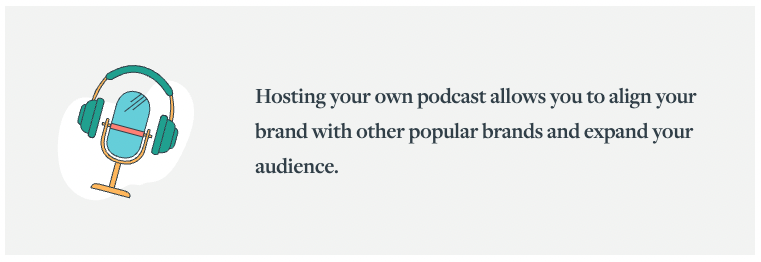
If you have the resources, this could be a strategic thought leadership opportunity. But corporate podcasters must consider more than just cost; they must also consider how the podcast will reflect on their company and their brand. Hosting a podcast is also time-consuming. Because listeners prefer regular content, you should be able to make a financial and time commitment to at least one podcast a month. Additionally, producing a podcast requires the right equipment and a certain level of technical skill to edit them seamlessly (although this is becoming easier with the availability of new tools).
If you decide to create your own podcast, the best way to advertise it is first through your owned platforms, like your email list, blog and social media. You can also schedule “crossover” episodes with other podcasts, where you agree to have each other’s hosts as guests; this usually occurs within the same industry (like tech or wellness), and is an effective way to expand your listenership. You can sponsor “promoted posts” on Facebook or other platforms that make sure the posts you want to market get seen in the news feeds of your target audience.
If you create your own podcast, make sure to add the name of the podcast to all your boilerplates – this includes your company or online bio; your email signature; your social media bios; and your bio for any op-eds or articles you write. Then, reach out to your network to get reviews you can use to advertise the podcast. These reviewers could include current or former employees, friends or colleagues in your industry. Always send a personal, sincere note when asking for a quote.
It’s important to remember that podcasts only work well when they’re done right. Before you create a podcast, you should have a clear goal in mind and a clear understanding of your target audience. Podcasts that come across as stilted, dry or uninventive will be a wasted resource. People are looking for podcasts that provide clear value to them, whether that is entertainment or industry insights they can’t get elsewhere.

2. Guest Interviewing on a Podcast:
If you don’t have the time or resources to create your own podcast, you may want to seek a guest spot on an established podcast. Remember that while you may be invited to talk about your brand, you don’t want to come across as too promotional.
To secure a guest spot, identify a show that has the best audience for your message. Reach out to the host through email or social platforms with a brief note about your company, brand and what topics you can speak about. If you are a well-known brand, hosts sometimes come directly to you for interview requests, so always consider these as a valuable PR option if the audience aligns with yours.
When preparing for a guest interview, write down your core messages ahead of time and have those notes in front of you when you speak. You should have at least three main points you want to get across in your answers. Listen to a few episodes ahead of time to get a feel for the style of the show; also research the host and be aware of any articles or books he or she has written.
3. Advertising on a Make the Podcast:
If you decide to advertise on a podcast, you can either reach out individually to podcasts you have identified, or you can use an advertising tool like Megaphone, which connects advertisers with relevant target audiences on a variety of podcasts, using a range of demographics. If you want to buy a host-read ad, it’s best to reach out directly to podcast hosts.
A podcast’s listenership is not always publicly available. If you want to know the number of downloads and demographics of a podcast’s listeners, request a media kit that will have this information and advertising rates.
Before creating your ad, you should have a clear measurable call to action in order to evaluate success or measure return on investment. The best route for this is to offer listeners something for free or at a lower cost than usual. For example, you could invite listeners to download a free ebook, a white paper, enter a giveaway, or purchase a product at a discount by going to a particular website. Each podcast you advertise on should correspond with a unique URL or discount code that will let you know how many visitors you had from that particular podcast.

The Future of Podcasts
Podcasts are growing as a source of news and entertainment, especially among millennials. A November 2020 Pinkston Institute survey found that nearly a quarter of respondents among ages 18-24 ranked podcasts as one of their top five sources of news, and half ranked it as one of their top five sources of entertainment.38 As the podcast industry grows, these numbers will likely only increase.
According to a 2021 Axios report, while “nearly every major media and entertainment company is pouring lots of cash into launching new podcasts,” many of them aren’t making “big money” yet. This is poised to change, however, as companies like Spotify, SiriusXM, iHeartMedia, and Amazon begin growing the podcast advertising market by “aggregating podcast services together, like advertising, distribution and hosting.”39
Podcast analytics for podcast creators are rapidly becoming more accessible. Remote Audio Data (RAD),40 developed by software product development company 3Pillar Global, was initially launched by NPR in 2017 but is now adoptable across the industry. This tool measures podcast listening across a range of participating clients and platforms, and can measure in detail how an audience is engaging, from how many people are downloading an episode, to how much of the episode they listen to, and whether they fast forward through certain parts. This information can be used by a podcast to secure more advertisers.
Some podcasts are now venturing into video, releasing video recordings of their podcasts on YouTube. Others are helping cover costs by releasing special content on sites like Patreon, which allows supporters to purchase paid subscriptions to content available only through that platform. Dynamic content – in which podcasters can insert niche content for specific geographic areas or have content expire when it’s no longer relevant – is becoming more popular.
A particularly widespread challenge for podcasts is advertising attribution. Most listeners are listening while they are driving or on the go, and can’t write down promo codes, URLs or other information they hear on an episode that help podcasters and advertisers track users. Companies like Chartable are installing trackers that can help podcasters claim attribution for listeners who don’t use their URL or promo code.
TAKEAWAYS
- Podcasting isn’t going away; it’s getting bigger.
- Podcasts are a valuable PR and marketing tool for brands and thought leaders.
- Listeners want regularly-released podcasts that entertain or inform, are under 45 minutes per episode and employ hosts who are funny, dynamic or particularly-skilled interviewers.
- Consider creating your own podcast if you have a creative idea and the time, skills and resources to execute it well; otherwise, consider advertising or appearing as a guest.
- Bigger isn’t always better; creating quality content and targeting the right audience are more important.
The number of people listening to podcasts has nearly doubled over the last four years and continues to grow.41 Adding podcasts to your digital marketing and communications strategy can provide a lucrative outlet for promoting content; can help you to reach new audiences and engage existing audiences; and can allow you to directly convey the message you want to these audiences. As podcast technologies improve, expect to see new tools for digital measurement, advertising and higher production quality. These will enable more individual creators to develop their own podcasts and expand opportunities for major brands.
Sources:
6 Postcast Insights, Oct 2020, https://www.podcastinsights.com/podcast-statistics/
7 Statista, “U.S. Podcasting Industry,” https://www.statista.com/topics/3170/podcasting/
14 “The Three Fundamental Moments.”
15 “The Three Fundamental Moments.”
25 Edison Research and Triton Digital, The Podcast Consumer 2019.
27 Edison Research and Triton Digital, The Podcast Consumer 2019.
36 This podcast first appears as a TV episode and then the audio is posted as a podcast.
37 This podcast first appears as a TV episode and then the audio is posted as a podcast.
40 “About Remote Audio Data,” NPR, accessed March 31, 2020, https://rad.npr.org/